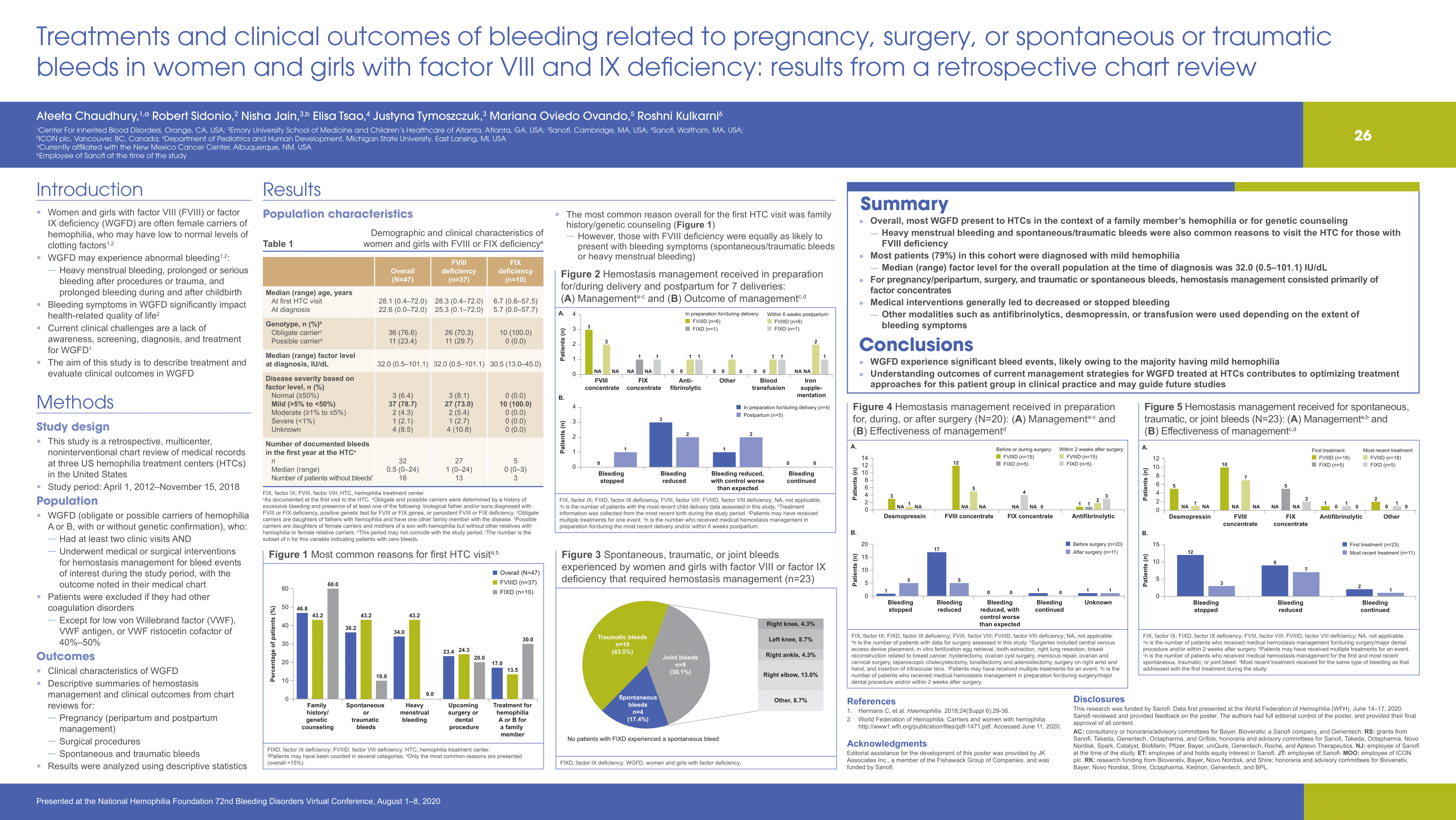National Hemophilia Foundation (NHF) - Posters
Objective:
Although women and girls with factor VIII (FVIII) and IX (FIX) deficiency (WGFD) make up ?5% of people with hemophilia, bleeding disorders disproportionately affect this group owing to menstruation, pregnancy, and childbirth. Increased awareness around females experience of hemophilia and proper treatment management during menstruation, pregnancy and delivery, and for spontaneous and traumatic bleeds are required. This study aimed to describe treatments and evaluate clinical outcomes of this patient group.
Methods:
This was a retrospective, multicenter, noninterventional review of medical records at three US hemophilia treatment centers (HTC). Data on the outcome of current medical and surgical management for dental procedures, surgeries, spontaneous and traumatic bleeds, and prior to and during childbirth were collected. Women and girls were included if they had obligate or possible hemophilia A or B, with or without genetic confirmation, and the outcome of any medical or surgical intervention during the study period (April 1, 2012November 15, 2018) was available in the patients chart. Descriptive statistics were used.
Summary:
Of 47 women and girls included in the chart review, 37 had FVIII deficiency and 10 had FIX deficiency, with median age at diagnosis being 25.3 and 5.7 years, respectively. A total of 78.7% were diagnosed with mild hemophilia (n=37; 27 with FVIII deficiency and 10 with FIX deficiency). The treatments used for pregnancy, surgery, and spontaneous or traumatic bleeds, and outcomes of hemostasis management are shown in Table 1. Patients were treated with various medications, including factor concentrates and antifibrinolytics. Most patients with the events of interest experienced stopped or reduced bleeding after an intervention, although several patients experienced continued bleeding.
Conclusions:
Understanding outcomes of current management strategies for WGFD treated at HTCs contribute to optimizing treatment approaches for this patient group in clinical practice and may guide future studies.




